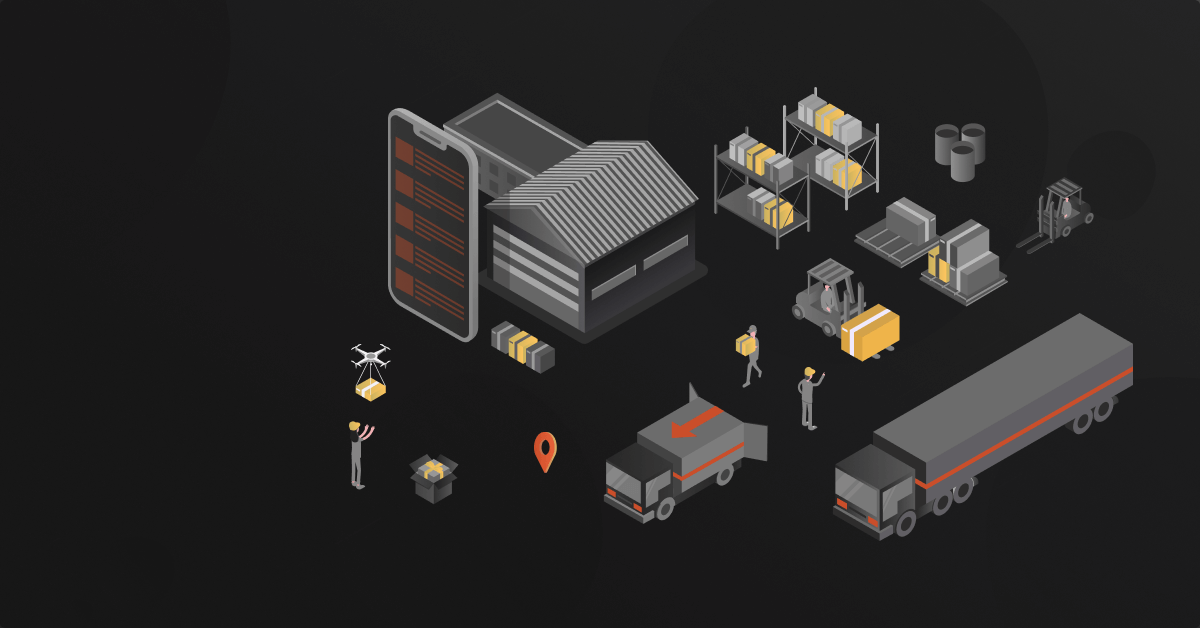Most of us understand how sensitive the price is to consumers when making a purchase. Setting the right rates for your product, be it selling through an online, or in-person platform, is difficult. It becomes even more tiresome for a novice entrepreneur who has to set prices in a competitive market.
Well, let’s break it down for you — In this article, we’ll take you through the different types of pricing strategies for distributors, key considerations and steps to set up a successful strategy. Let’s get started.
Contents
Types of Pricing Strategy for Distributors
The choice of appropriate pricing strategy for your distribution business is not a one-size-fits-all package deal. It is a matter of a company finding its best fit, considering its uniqueness, goals, and competition.
Intelligent pricing requires both data and logic—that is, using information to work out the best prices for your products, so that you do not lose on profits.
Here are the different pricing strategies you might consider:
Competitive Pricing Strategy
This involves aligning your rates with those of your competitors. Much like when you follow the recommended pricing from the manufacturer. This is the most common pricing strategy among distributors because most of them sell similar products.
Cost-Plus Pricing Strategy
With this strategy, you take the cost of manufacturing and distributing a product and add a fixed percentage or amount to it. This way the price of a product includes the costs incurred to develop it plus the profit. Therefore, will help you make money and pay your expenses.
Economy Pricing Strategy
In this case, the pricing strategy involves lowering your price point in order to sell a large number of goods and turn a profit from sales volume. The goal is to sell as many products as you can while maintaining a low profit margin.
Penetration Pricing Strategy
This is when new companies set low prices to quickly grab a big share of the market. Even established companies do it when launching new products to get people interested.
Value-Based Pricing
This approach determines prices by asking customers to bid on the perceived value of your product. Their willingness to pay is the key factor. Nevertheless, you must also consider the value you provide to the process as a distributor.
Ultimately, the best pricing strategy for any wholesale business depends on what suits the best. Look at your goals, strengths, and what your competitors are up to, and make your decision based on that.
Recommended reads: Understanding Digital Transformation in Logistics and Distribution
The Importance of Choosing the Right Pricing Strategy
1. Revenue and Profitability: Pricing decisions have a direct impact on the revenue a company will make; therefore, the relation between market demand, competition, and customer willingness to pay are various factors in determining the best price.
2. Competitive Positioning: A proper pricing strategy for distributors helps a company gain a competitive advantage. A firm must understand the situation and the expectations of its customer base.
This helps them develop a pricing model that will give them a competitive edge over others. It can be accomplished by either offering lower prices to win customers or premium prices in satisfying customers.
3. Market Share and Loyalty: Proper pricing may enable a business gain more market share and achieve the loyalty of its target customers. It may help businesses cut on their costs of goods sold and help them recover their profit margins.
4. Adapting to Change: Since markets tend to change all the time, prices for any product do, too. With price flexibility, a business would have the ability to adapt quickly to such changes in demand, competition, and so on, maintaining them competitive and successful in this fast pace of the marketplace.
Recommended reads: The Role of AI in Distribution
Key Considerations Before Choosing Your Pricing Strategy
When deciding on a pricing strategy for your distribution business, there are three important factors you should keep in mind:
1. Competitor Pricing
Take a look at what similar businesses are charging for their products or services. This doesn’t mean you have to match or undercut their prices, but it gives you an idea of what customers might expect to pay. It’s also a chance to see where you can stand out with your own unique value proposition.
2. Storage Expenses
As a distributor, you must have products in stock and have them ready to ship to your customers. This means you are in a position to add value to your product offering, but you also need to spend on your storage space, shipping, and other services.
Take these costs into consideration as you determine your prices since they contribute to the value you are offering to your customers.
3. Customer Demand
Consider the demand associated with whatever you are offering. Is it something people really need or is it rather a luxury item? It will be assisted to put the prices at a level attractive to the target market when one puts in mind the scale of demand.
4. Accessibility to Product
At times, scenarios such as the global pandemic, Brexit, labor shortages, or geopolitical conflicts may affect the accessibility of products.
For instance, the maintenance of a supply of essential parts, like computer chips for electronics, can be a competitive differentiator in your pricing strategy. Keep an eye on what’s happening within the market and adjust your price strategies as necessary.
5. Regular Pricing Reviews
Continuously check if your prices are in the right competitive range and in relation to the goals of your business by having periodic reviews of your pricing. In setting your prices for different consumer markets, you may use SMART criteria: specific, measurable, achievable, realistic, and targeted. It is done based on the volume and dynamics of your market.
6. Additional expenses
Running a business involves more than just the production costs. You also have to consider expenses like rent, utilities, insurance, and marketing. Make sure you count these overhead costs into your pricing strategy so that you can cover your expenses and make a profit.
Since every distribution business is different, the time and way you will make pricing reviews will also vary. So, make a strategy to suit your specific business requirements and future goals for success over the long run.
Recommended reads: Navigating AI: A Roadmap for Distributors and Manufacturers
How to Develop an Effective Pricing Strategy for Distributors
Here’s a step by step-by-step guide to develop a distribution pricing strategy:
- Set Clear Business Objectives and Pricing Plans: With careful planning, decide first of all what you want to achieve as a business. Do you want more profits overall or to sell more items with lower profitability each? Your strategic pricing should reflect your objectives. Separate your objectives into several smaller, more specific plans. For example, to earn an extra $5 million a year, start looking at where those profits will come from in terms of product and market.
- Use Data Analysis to Improve Pricing: The next step is to analyze data. It is a good idea to use a data integration software such as DCKAP Integrator. It will bring all the data into a comprehensive view which will make data analysis convenient. Data-driven pricing is always preferred over slow and error-prone manual practices. Fast price reactions are critical to avoid losses in profits.
- Understand Your Product’s Value to Customers: Various products need varied storage costs, like products such as foodstuffs requires low costs for storage as they need to be used immediately. Whereas big machines are stored for a longer period, and that is why such products have high storage costs. Understand such sorts of variation of value so that you may charge such values in their pricing strategy.
- Price Your Products Right: Customers want products they can buy and use right away. So, think about the situation. For example, if there’s a high demand for face masks during a pandemic, you might charge a higher price because they’re in demand and you have limited stock.
- Involve Your Sales and Marketing Teams: Your sales and marketing teams know many things about your customers, like where they live and what they like. Using this information, one may go ahead with the price optimization. Make sure that your sales team collects data from customers as one of their goals. The marketing team also gathers various kinds of useful information, like the market prices and what new product ideas are trending.
- Get Support for Data Collection: As mentioned above, data analysis is important. For a successful pricing process, you need to have the right data. If you are not collecting data, then you should look for support from the higher management of your organization to acquire such data. The right type of data will help in setting the right price.
The above-mentioned points are the Key-value Items to develop a good pricing strategy.
Final Words
Price, thus, is undoubtedly an important factor for any distribution company. It is an important factor of customer choice, and it may be tough, especially for new market entrants who are trying hard to introduce new products in highly competitive marketplaces. But with the above-stated strategies and tips, one can build up a winning pricing strategy considering the important factors.
The ultimate goal is to balance profitability with competitiveness in order to achieve long-term success and sustained growth.
FAQS
What are the best ways for distributors to determine market price?
Distributors can determine market price by conducting market research, analyzing competitor pricing, and considering factors like demand, supply, and customer preferences. This helps ensure pricing aligns with market conditions and customer expectations. Distributors should also consider the complexity of distribution operations, this way they can prepare for any overhead costs.
How does pricing strategy impact customer experience in distribution?
Pricing strategy affects the perception of value by the customers regarding the products or services. The distributors must balance the competitive pricing of the offering with the need for high-quality products that have the capability of satisfying the customer. Furthermore, they can market their products by providing customers with value-added services or promotional discounts or by bundling them. This allows the distributors to become competitive with other competitors and to attract the price-sensitive customers in the market without indulging in high prices.
What role do wholesalers or wholesale distributors play in pricing strategy?
Wholesalers or wholesale distributors act as intermediaries between manufacturers and retailers. They set prices for bulk purchases, considering factors like production costs, market demand, and competitive pricing. They negotiate with suppliers to secure the best pricing model based on factors like volume discounts, payment terms, and exclusivity agreements. Effective negotiation skills and understanding of market dynamics are essential for securing a good deal with suppliers.
Why do distributors offer different prices for the same product in different situations?
They may price differently in different markets because of such factors as customer segmentation, volume discounts, or promotional offers that appeal to different customer needs and market segments. To keep the prices the same for a long time, they use such strategies as long-term contracts, price guarantees, or hedging against fluctuations in the market
How can distributors use analytics to enhance their pricing strategy?
Distributors can use analytics tools to analyze market trends, customer behavior, and competitor pricing, enabling them to make informed pricing decisions that maximize profitability and meet customer needs. Their pricing capabilities enable them to to effectively set, adjust, and manage prices across their product portfolio.
What unique challenges do distributors face in implementing pricing strategy?
Distributors face challenges such as managing price consistency across distribution channels, dealing with price transparency, and balancing pricing with maintaining strong business relationships. Overcoming these challenges requires careful planning and effective execution of pricing strategies.




